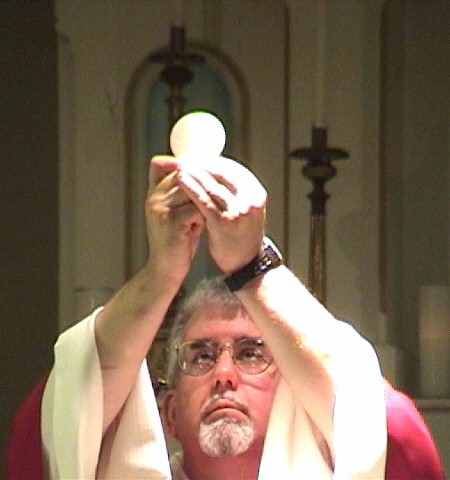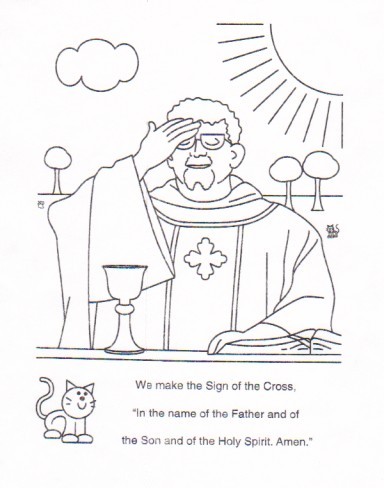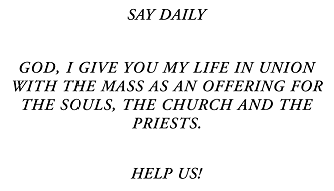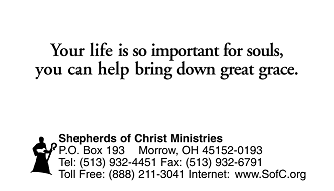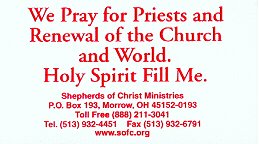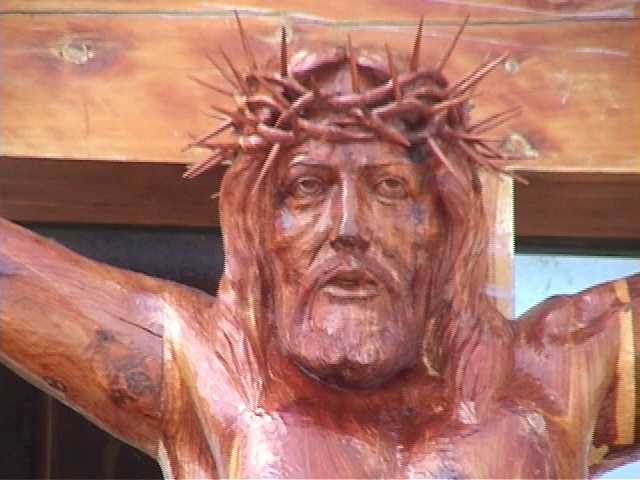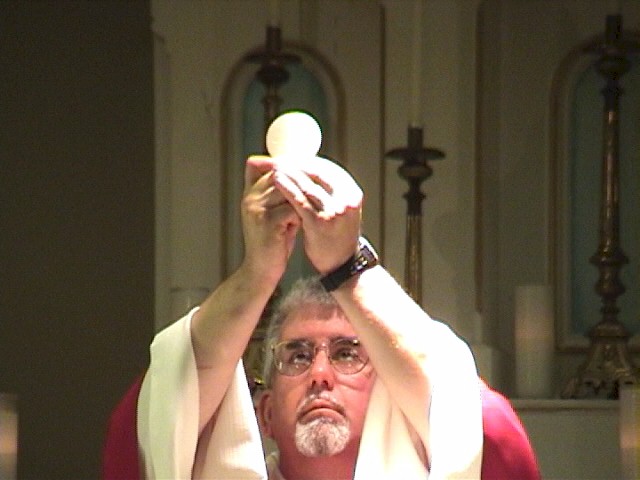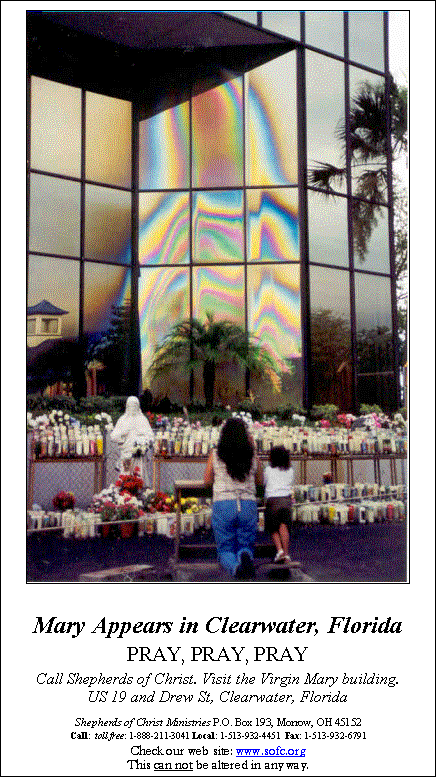4
Death
and Resurrection
Our
incorporation into the mystery of Christ at baptism, and the gradual maturing
of that life in the process of becoming, is centered in the pattern of
death-resurrection. Indeed, the theme of death-resurrection is at the heart of
salvation history. Let us briefly consider its place in the Old Testament, in
the New Testament, and in God's ongoing self-communication, always remembering
that any form of death—that is, any form of suffering—is meant to lead to
greater life, greater peace, and greater happiness.
The theme of
death-resurrection is at the heart of Old Testament history. The Jewish
people, under the leadership of Moses, experienced death-resurrection as they
were formed into the people of the covenant—Yahweh's people. In the great
Exodus event, they escaped Egyptian slavery, went on to Mt. Sinai where the
covenant was ratified, and then progressed to the Promised Land. As members of
the Mosaic covenant—as Yahweh's people—the Jews experienced a religious
transition; they passed over to a higher level of religious existence, to a
more intimate union with God.
This religious
transition contained death-resurrection. For the Jews to become people of the
covenant, to remain so, and to grow in the life of the covenant, it was
necessary that they undergo a mystical or spiritual death. In short, the Jews
had to be willing to pay a price; they had to be willing to bear with that
which was difficult in covenant life; they had to be willing to die to that
which was not according to Yahweh's will. This mystical death, however, had a
very positive purpose; it was directed at life in the covenant and at growth
in that life. This spiritual death, in other words, was aimed at resurrection.
Christ perfectly
fulfilled the Old Testament theme of death-resurrection. In doing so, he, too,
was experiencing a religious transition. He was passing over—gradually, at
first, and then definitively in his death—to a new kind of existence, to the
life of his resurrection, which he achieved not only for himself, but for all
mankind. To achieve this new life of resurrection, Jesus was willing to pay
the price; Jesus was willing to suffer, even unto death. That it had to be
this way—that the only way Christ could have achieved resurrection was
through suffering and death—was pointed out by Jesus himself to the two
disciples on the road to Emmaus: "Then he said to them, 'What little
sense you have! How slow you are to believe all that the prophets have
announced! Did not the Messiah have to undergo all this so as to enter into
his glory?' Beginning, then, with Moses and all the prophets, he interpreted
for them every passage of Scripture which referred to him" (Lk 24:25-27).
Christ has structured
the Christian life by the way he lived, died, and rose from the dead. It is
obvious, then, that the pattern of death-resurrection must be at the heart of
the Church's life. Individually and collectively, we continually die with
Christ so that we may continually rise with him. Thus, we pass over in a
process of continued religious transition to a greater participation in Jesus'
resurrection. It is true that our participation in Christ's resurrection will
reach its completion only in eternity. Nevertheless, we begin the life of
resurrection here upon this earth, in the here and now of human life, in the
midst of joy and pain, in the experience of success and failure, in the sweat
of our brow, in the enjoyment of God's gifts. As Christians, we should have a
sense of growth concerning our here-and-now life of resurrection. Some
Christians seem to have a rather static view of the Christian life. They do
not seem to have a vital and efficacious realization that the Christian life,
centered in death-resurrection, should become more conscious, more
experiential, more dynamically relative to daily existence.
We cannot maintain the
life of resurrection or grow in it without a willingness to suffer. This does
not mean that we need to feel overwhelmed and heavily burdened by the
suffering in our lives. The greater portion of suffering for most Christians
seems to be an accumulation of ordinary hardships, difficulties, and pains. At
times, however, deep suffering—even suffering of agonizing proportions—can
enter one's life. During these oppressive periods of suffering, a person's
sense of anguish can become so great that the prospect of continuing life
becomes an agony in itself. Whether the sufferings of Christians are of either
the ordinary variety or the rare and extreme type, Christians must
nevertheless convince themselves that to properly relate to the cross is to
grow in resurrection—and for an individual Christian to grow in resurrection
means that he or she will also have an increased capacity to help give
resurrection to others.
One of the most
traditional forms of the experience of the cross—that is, of dying with
Jesus—that spiritual masters have always treated is self-discipline or
asceticism. All forms of life demand self-discipline: The athlete must subject
himself or herself to rigorous training; the musician must endure long hours
of practice; the doctor must be willing to order his or her life to the
rigorous demands of the medical profession.
The Christian life,
too, has its own form of discipline or control that has as its comprehensive
purpose the greater assimilation of the Christian's total being to Christ.
Christian self-discipline, or asceticism, allows for the proper development of
the Christ-life in all its dimensions. Like all forms of authentic discipline,
it is at the service of life; when it is properly exercised, asceticism helps
us to grow in our capacity to love God and others.
This proper,
grace-inspired control over the complete person is necessary because the
various sense and spiritual faculties do not automatically follow the lead of
grace. Because of original sin and personal sin, there are various tendencies
within us that, if they are not properly controlled, will lead us away from
Christ and our spiritual development. The Christian, therefore, must be
willing to exercise a reasonable self-discipline despite the difficulty that
is involved. Moreover, this control must extend to all of the person's
faculties.
Regarding our
intellectual lives, there are various tendencies inimical to the spiritual
life that must be disciplined. There can be a laziness, for instance, that
might prevent the proper pursuit of study that is necessary for our own
particular role in the Church. There can be an unwholesome curiosity that
might lead us to want to know that which is pleasing, rather than, first of
all, that which is necessary. There can be an intellectual pride that might
manifest itself in various ways; some people, for example, find it extremely
difficult to be open to the ideas of others or to admit their own mistakes.
The will, the decisive
faculty of the human person, must receive special attention. It must become
both supple and strong: supple in order to be open to the varied movements of
the Holy Spirit; and strong in order to guide the entire person, including
those forces that can so powerfully lead away from God. Concerning concrete
decision making, there are two extremes that must be avoided: On the one hand,
we must avoid precipitous action that is devoid of reflection that is rooted
in an appropriate openness to the movements of the Spirit; on the other hand,
we must not fall prey to the habit of indecision. Some people are prone to
spending an excessive amount of time in making decisions about even the
simplest matters. Life is short, and we must condition ourselves to make
decisions after appropriate reflection, which, in many of our ordinary actions
and decisions, is practically instantaneous. Unhealthy fear and other factors
that are responsible for indecision must be curbed despite the great pain that
this can, at times, cause for certain temperaments.
The faculties of
memory and imagination must also be controlled. These can be of great value if
properly guided; if they are not properly guided, however, they can, in their
unruliness, become great obstacles to spiritual progress. An undisciplined
memory and imagination can, for example, seriously interfere with our prayer
life. Similarly, memory and imagination that are not properly controlled can
also give rise to numerous temptations against the various virtues.
We must also properly
control the emotions. A considerable portion of past spiritual literature has
not given due allowance to the role that God intends the emotions to exercise.
When we speak of controlling the emotions, therefore, we are not suggesting
either an aggressive repression or an inhuman rigidity; rather, we speak of a
control that permits the emotions to contribute to the richness and overall
value of our actions. We must remember that the emotions, when they are
properly integrated with the movements of the intellect and will, enhance the
goodness of our acts.
It is obvious,
however, that we must strive to discipline the emotions' evil tendencies if
these emotions are to contribute to spiritual growth. The emotions can cause
havoc if such a discipline is lacking. At times, they can reduce a person to
an almost brute existence; at other times, they can seriously constrict a
person and, consequently, seriously impede the proper exercise and development
of the Christian life.
It is equally obvious
that a person's bodily nature should also be the subject of proper discipline.
The body is essentially holy, partaking in the holiness of Christ's body;
however, the body is also subject to numerous evil tendencies that are at war
with the spiritual life and must be controlled with a sound asceticism. St.
Paul reminds us of this: "I do not run like a man who loses sight of the
finish line. I do not fight as if I were shadowboxing. What I do is discipline
my own body and master it, for fear that after having preached to others I
myself should be rejected" (1 Cor 9:26).
Renunciation is
another form of dying with Jesus that, over the ages, has been given much
attention in the teaching of the spiritual masters. Indeed, the New Testament
itself attests to the undeniable role that renunciation plays in the Christian
life. The gentle St. Luke, for example, teaches with a peculiar intransigence
Jesus' message of renunciation—a message that Jesus himself lived.
Renunciation was by no means the only aspect of Christ's life, but it was an
undeniable one. Christians, because they are followers of Christ, must also
include renunciation in their lives regardless of their individual vocations.
Again, it is well to remind ourselves that the cross is always intended to be
connected with life and love. Paradoxically, then, we embrace renunciation for
the sake of life. This was the purpose of renunciation in Jesus' life, and it
must have the same purpose in the Christian's existence. Let us now consider
some of the various ways in which the principle of renunciation applies.
Self-discipline or
asceticism, which we have already discussed, does not necessarily include the
aspect of renunciation. A person can exercise self-discipline in the positive
use of created goods, and renunciation would not be involved; rather, the
person would be relating to a created good according to God's will.
Renunciation is, however, sometimes related to the practice of
self-discipline; a person cannot always properly relate his or her total being
to God's creation unless, from time to time, he or she is willing to renounce
particular goods and values. Consider this example: A person will not always
properly employ his or her external senses in using God's creation unless, at
times, he or she denies the senses what they naturally desire. If we are not
willing to admit this, we are being falsely optimistic about human nature.
There is a sinful element within us that inclines us to a misuse of creation.
To control this tendency toward misuse, we must exercise renunciation of those
goods toward which our various spiritual and sense faculties are oriented.
In addition to being
an aid to self-discipline, there are other uses of renunciation. The choice of
a particular vocation or life's work, for instance, demands a renunciation of
various other created goods and values. A person who chooses marriage has to
be willing to sacrifice certain values and activities that might well be
appropriate for a single person, but are incompatible with the married
vocation. The Christian scholar, who is called by God to make his or her
contribution to the life of the Church in the academic sphere, must also learn
the lesson of renunciation; such a person cannot be true to the demanding work
of scholarship unless various human values—all of which are good in
themselves—are nevertheless sacrificed.
Another use of
renunciation is its special witness to the transcendent aspect of the
Christian life, one element of which is that our life of grace is a
participation in the transcendent life of God. This life has a radical thrust
of desiring God as he is in himself; this particular desire will not be
completely satisfied until we achieve the beatific vision in which we will
possess God as he is in himself, without the mediation of the world. Here on
this earth, however, we can, to a certain extent, go out to God as he is in
himself. Among the methods for achieving this goal is the practice of
renunciation. Speaking of this kind of renunciation, which is expressive of
transcendent love of God, Karl Rahner observes: "For such renunciation is
either senseless or it is the realized and combined expression of faith, hope
and charity which reaches out toward God precisely insofar as he is in
himself, and without any mediation of the world, the goal of man in the
supernatural order" (Theological Investigations, vol. 3, pp.
51-52). God, then, wants us to seek him not only as he is immanent in
creation, but also as he is transcendent in himself. To reiterate, one way to
achieve this is through the prudent, periodic renunciation of created goods
and values.
We have been
discussing two main forms of dying with Jesus, namely, self-discipline, or
asceticism, and renunciation. These traditional forms of the Christian cross
actually permeate the experience of numerous and various kinds of pain,
suffering, hardship, bearing with the difficult—whatever name one wishes to
apply. Let us consider some of these ways in which we are daily called to
mystically share in the death of Jesus.
A common form of
suffering is the experience of loneliness. Trying to cope with loneliness, in
fact, seems to be one of the major problems of our day, and some think that
the problem is perhaps greater in the United States than anywhere else in the
world. Loneliness, of course, is not limited to urban centers, but it does
seem to haunt our crowded cities in a special way. Ironically, it seems that
the more populated an area becomes, the more possibilities there are for
loneliness.
There are two basic
kinds of loneliness—that which need not be and that which cannot be avoided.
The first type of loneliness results from the fact that we are not in proper
touch with our true selves, with God, or with others; the second type results
from our existential situation as wayfarers, as pilgrims, who have not yet
arrived at our final destination. The pain that results from the first type
need not be, and we should work to eliminate its causes. The suffering and
dying that are related to the second kind, however, are inevitable. As
Christians, we should use this suffering and dying to grow in various ways,
among which is the maturing realization that we have no lasting home here on
earth.
There is, in addition,
the very prosaic type of suffering that is involved in the proper living of
each day. There is nothing dramatic about this form of pain, and, precisely
because it seems so uneventful, it is very difficult to properly relate to it
in a consistent fashion. On particular occasions, we might feel that a quick
death by martyrdom would be preferable to the daily dying that involves all
sorts of little sufferings. But this daily dying is a precious type of
suffering, and to grow in the realization of its importance is a significant
sign of spiritual progress. It is a sign that we have the spiritual keenness
to comprehend that God so often situates the cross within the ordinariness of
everyday life.
Crucial decision
making is also a distinct form of dying. Making a decision, we realize, is
extremely important for both ourselves and others. There might be two
possibilities or three or even more. We might seek advice from others, but in
the last analysis, we know—oh, how well we know—that, ultimately, we alone
must make the decision before God. We pray for light and strength, for we
realize that we need help not only to make the proper decision, but also to
properly deal with the pain that is inevitably involved.
The experience of
failure is another suffering that we encounter in various degrees along the
path of life. Some fail in their attempts to achieve the type of employment
they so much desire; others fail to perform properly once they have been so
employed. Some are not very successful in initiating interpersonal
relationships; others are not very successful in maintaining the ones in which
they do become involved. Some experience failure because they strive to
accomplish too little; others experience failure because they strive to do too
much. Some encounter failure because they have not given the proper effort;
others feel failure's pain despite their conscientious perseverance. In these
and in other types of failure there is a double pain—the pain of having
failed and the pain in having to begin over again. The pain of having failed,
however, must not be wasted; we must use it to become better persons. If we do
use it, we are able to cope more maturely with the effort that is involved in
beginning afresh.
Experiencing various
types of transition along the path of life also produces its own kind of pain.
Periods of transition from one age of life to another are numerous, and some
are obviously much more radical than others. The transitions from childhood to
adolescence, from adolescence to young adulthood, from young adulthood to
middle age, from middle age to old age produce various, and sometimes rather
intense, kinds of sufferings. There is the classic kind of pain that
adolescents experience, for example, as they grope for some kind of
self-identity, as they try to cope with various types of peer pressure, as
they struggle for a new kind of relationship with parents because their
childhood relationship no longer suffices. These periods of transition, or
life-stages, also involve changing interests and goals; that which held our
interest at one stage of life leaves us bored at another. To establish a new
set of interests and challenges is sometimes painful, but not so painful as
the boring vacuum that we must exist in if we fail to replace those now-dead
interests and goals with new ones.
Another type of
transition involves our work-life. During the past decade, people have
increasingly experienced the necessity, and sometimes the desirability, of
making work or professional changeovers. Whereas in the past a person would
more or less be expected to remain in the same skilled labor or professional
position for the duration of his or her working years, today it is not
uncommon for a person to embark upon several or more career changes. These
changes, even when the desire for a change rather than a circumstance of
necessity has been the catalyst, involve the inevitable difficulties that
accompany the adjustment to new surroundings, different coworkers, and
different responsibilities.
Furthermore, work or
professional changeovers sometimes demand a change in residence, not only to
vastly different parts of the country, but even to other parts of the world.
The transition that involves a change of residence, in fact, is a growing
characteristic of our times. We are definitely becoming a much more mobile and
transient population; however, even when persons freely seek these changes in
residence, they can experience considerable hardship. One must die a bit—one
must separate himself or herself from people, places, customs, landmarks that
he or she has perhaps cherished over a long time. Not to feel this jolt, this
separation, this dying, would mean that one possessed less than a sensitive
heart.
Rejection, in various
forms, is another pain not uncommon to human experience. Rejection because of
race, religion, or ethnic origin has been, sad to say, a rather prominent part
of our country's history. Blacks, in particular, have felt the wrath of racial
rejection and discrimination. Others, too, have not been immune—this group
includes, among others, American Indians, Puerto Ricans, and
Mexican-Americans.
Although we ourselves
might not have suffered racial, ethnic, or religious rejection, we are
certainly susceptible to other types. We may have experienced, for instance, a
certain ostracism in not being accepted—or being only reluctantly
accepted—by this or that group, by this or that organization. When our ideas
and opinions are not accepted by others, we feel the sting of yet another type
of rejection. Further still is that very painful yet all too common rejection
of not feeling loved by the person whom we dearly love.
The type of rejection
that we experience—no matter what it might be—carries with it its own kind
and degree of suffering that we can neither deny nor instantaneously cause to
go away; we can, however, profit from its painful presence. One of the things
we must do in order to grow from the rejection that we experience is to refuse
to harbor bitterness against the person or persons who have caused us pain.
Not to be bitter can be difficult—at times, it can be very difficult. If we
do remain bitter, however, our suffering is increased by a type of pain—the
pain of bitterness—that is not growth promoting, but is, rather, pernicious
to the well-being of our personality.
The experience of
various kinds of uncertainty is another type of suffering, or dying. The list
of examples of human uncertainty is a long one. There is the uncertainty that
is connected with the approach of a first experience: the young doctor who is
still in training, for example, is understandably apprehensive as he or she
prepares for his or her first surgery. There is the uncertainty of the young
man and the young woman who are about to marry. Both begin to realize the
uncertainties that are attached to marriage: Am I really marrying the right
person? Will the children be normal and healthy? Will my partner love me over
a lifetime, or is it possible that love will turn to coldness or even hatred?
Likewise, the young businessman wonders whether the financial investment that
he is about to make will result in increased earnings or ultimately lead to
bankruptcy. There is also that common uncertainty that has plagued men and
women of our contemporary age—namely, the question of whether life as we now
know it on this earth will suddenly end in a nuclear holocaust.
Christians, of course,
experience these same uncertainties to the same extent that non-Christians
experience them. Christians, however, precisely because they are Christians,
should react to uncertainty and assimilate it in a manner that will differ
from that of non-Christians. The Christian life is, after all, supposed to
extend to all the dimensions of authentic human existence—including the
experience of uncertainty.
There is, however, a
way in which Christians experience uncertainty in a manner that differs from
non-Christians. There are specific uncertainties that explicitly arise out of
Christian practices. Let us consider a few examples. In deciding one's basic
state of life, the doubt, confusion, and anxiety that can temporarily
accompany a choice of vocation can be agonizingly painful for some people.
There are, in addition, the uncertainties and obscurities that, at times,
accompany spiritual development in general. In the practice of prayer, for
instance, there can be dryness, or an apparent inability to encounter God,
even though God is really present to the person. There can also be a certain
repugnance as one feels the demanding effort that is required to pray in
present circumstances, as well as the bothersome uncertainty that makes us
wonder whether our prayer is the proper type for us here and now.
What is more, various
uncertainties surround the seemingly contradictory manifestations of God's
will. There might be, for example, a certain indication that God would have us
act in a particular way, yet his will, as it is channeled to us from a
different perspective, seems to suggest another course of action. Of course,
God never contradicts himself; the contradiction is only an apparent one. We
are not without pain, however, as we work through the confusion and
uncertainty.
How should we
Christians act in times of uncertainty? We must be conscious of the two great
realities of love and trust. First, we must try to be particularly conscious
of how much God loves us in Christ. This deepened realization, in turn, will
lead us to return that love in such a way that our love will be characterized
by an abandoning trust in God's providence for us. Consequently, times of
uncertainty can be times of tremendous growth. For we are creatures who all
too often can become self-complacent before God; we are prone to forget just
how weak and helpless we are without God. The discomfort of uncertainty, then,
can help arouse us from this false sense of security because at these times we
become more conscious of our helplessness and we approach God for guidance,
strength, and consolation.
When we experience
uncertainty we should also be aware that, although we do not possess all
possible light, we do have enough light to properly cope. The general pattern
of Christ's life is always before us as an example and can be lived out in
circumstances of uncertainty as well as at any other time. We can also utilize
particular means that can lessen or even dispel the uncertainty, or that will
at least help us to properly cope. Examples of such means are prayer and the
seeking of advice from competent persons—if the particular uncertainty
indicates that the counsel of another or others would be helpful.
We have been
discussing some of the specific ways in which we experience suffering. Let us
now end this discussion in the same way that we began—by reminding ourselves
of suffering's purpose in God's overall plan. Suffering, when it is properly
encountered, leads us to a more mature Christian existence, that is, to an
increased participation in Jesus' resurrection. If it is unchristian to flee
the suffering that God intends for us (we are, of course, allowed to take
proper means, as indicated by God's will, to dispel or alleviate suffering),
it is also unchristian to view suffering out of perspective. We should view
suffering, or dying with Christ, in relation to growth in the life that Jesus
came to give us in abundance. As we properly encounter suffering, we are more
and more cutting through the layers of the false self and increasingly coming
in touch with the true, Christic self. If we live according to this true self,
we become more capable of loving God and our fellow human beings. We become
more vibrant personalities, more sensitive to the true, the good, the
beautiful. We concentrate on the good that God's love has put in creation
rather than on the evil therein that results from man's sinfulness.
Although we might
endure suffering with a proper Christian perspective, this is not to say that
we find it easy to suffer. We need constant motivation for the proper
assimilation of the suffering that daily faces us. This motivation, in turn,
must be centered in the remembrance of the one who has suffered before us:
Though he was harshly treated, he
submitted
and opened not his mouth;
Like a lamb led to the slaughter
or a sheep before the shearers,
he was silent and opened not his
mouth.
Oppressed and condemned, he was
taken away,
and who would have thought any
more of his destiny?
When he was cut off from the land of
the living,
and smitten for the sin of his people,
A grave was assigned him among the
wicked
and a burial place with evildoers,
Though he had done no wrong
nor spoken any falsehood.
—Is 53:7-9


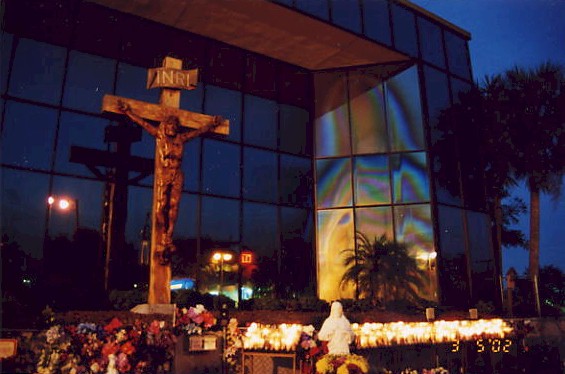
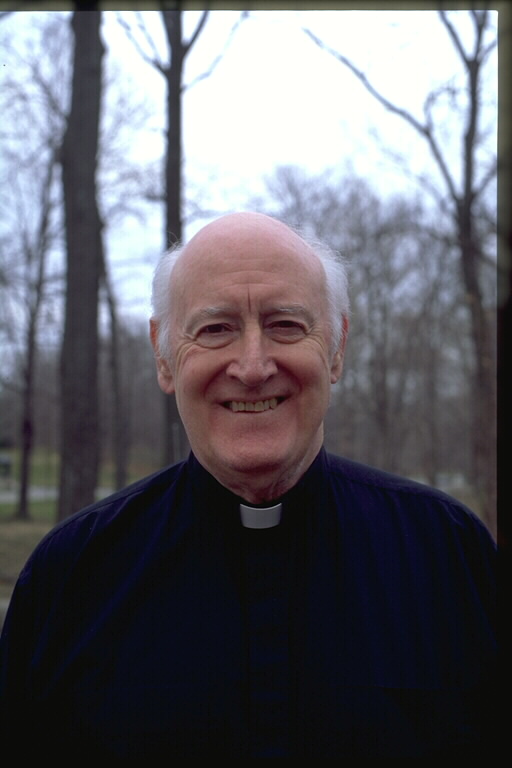
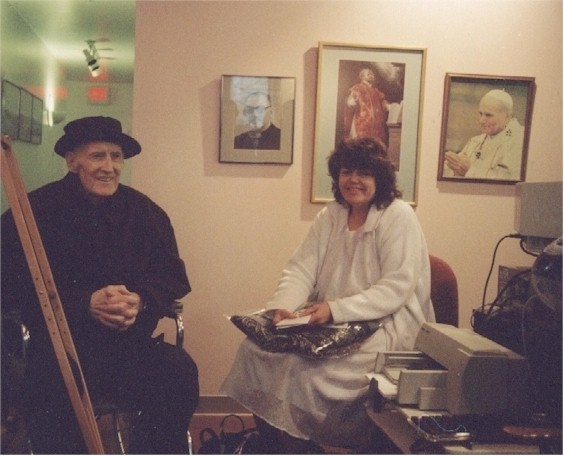
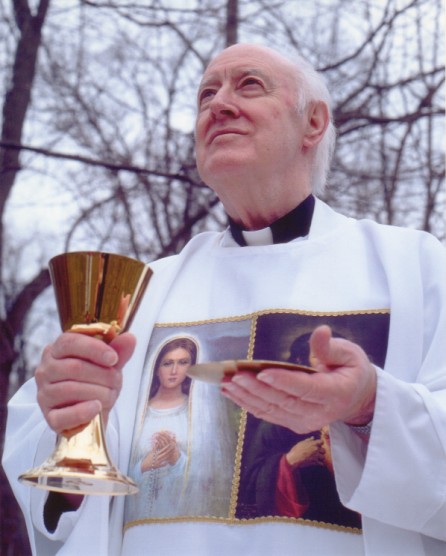
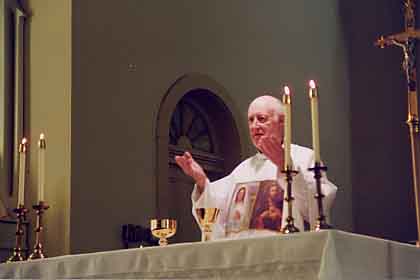
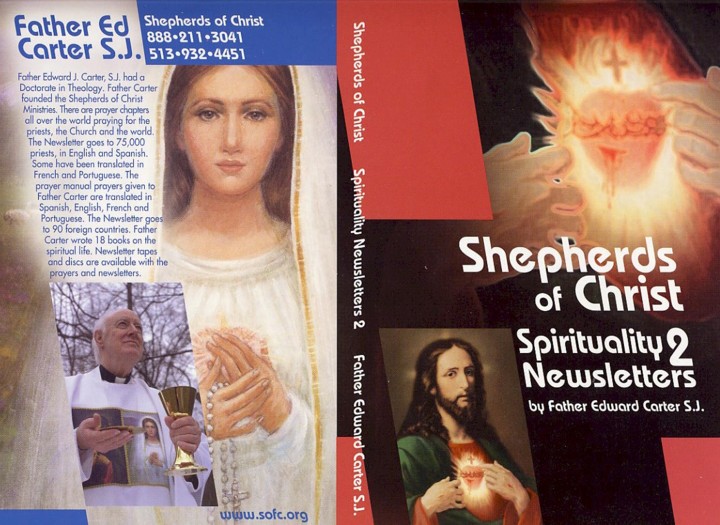
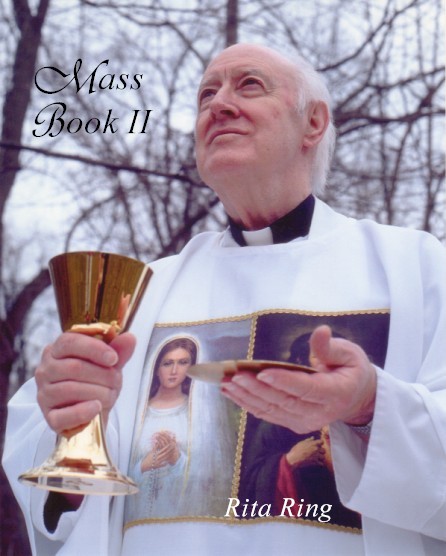


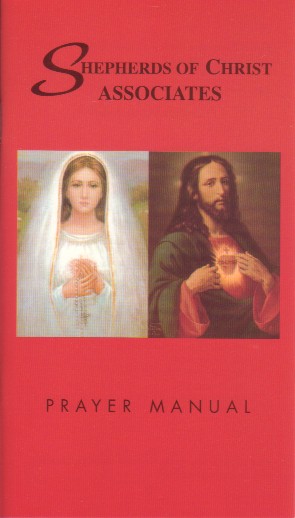


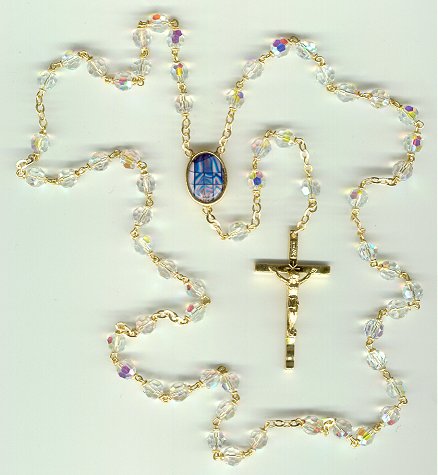
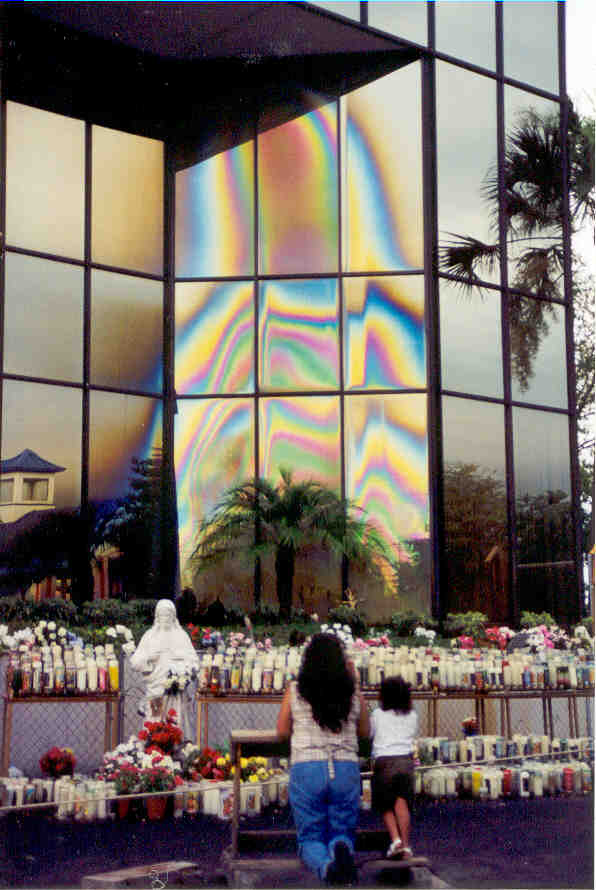
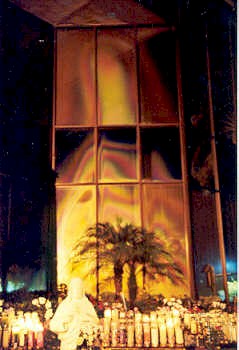


 Mary
talks to the Nursing Homes
Mary
talks to the Nursing Homes